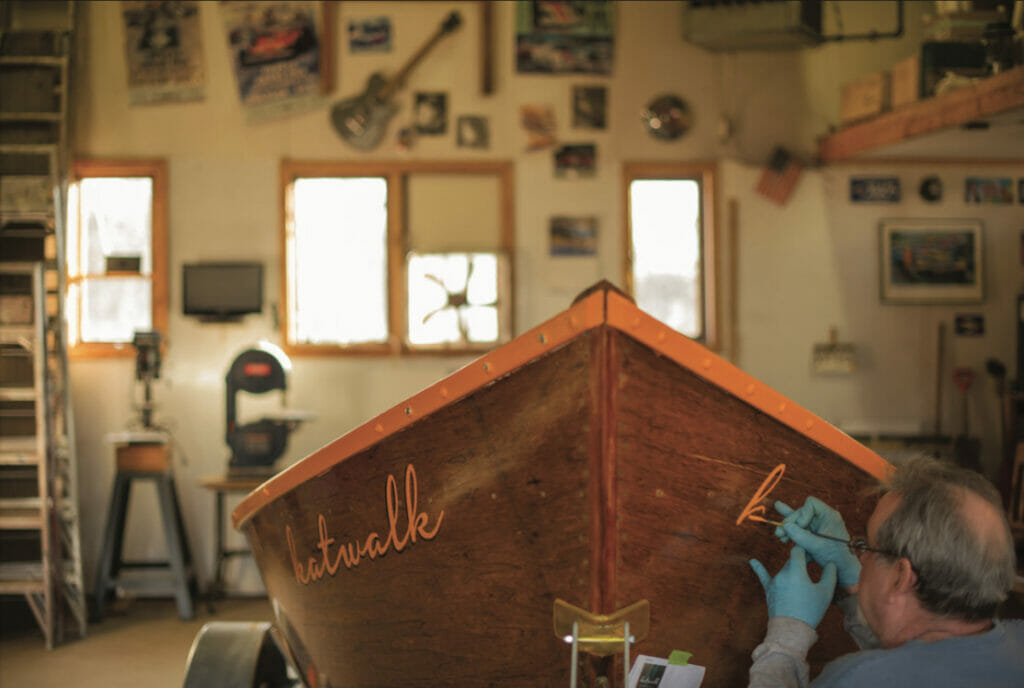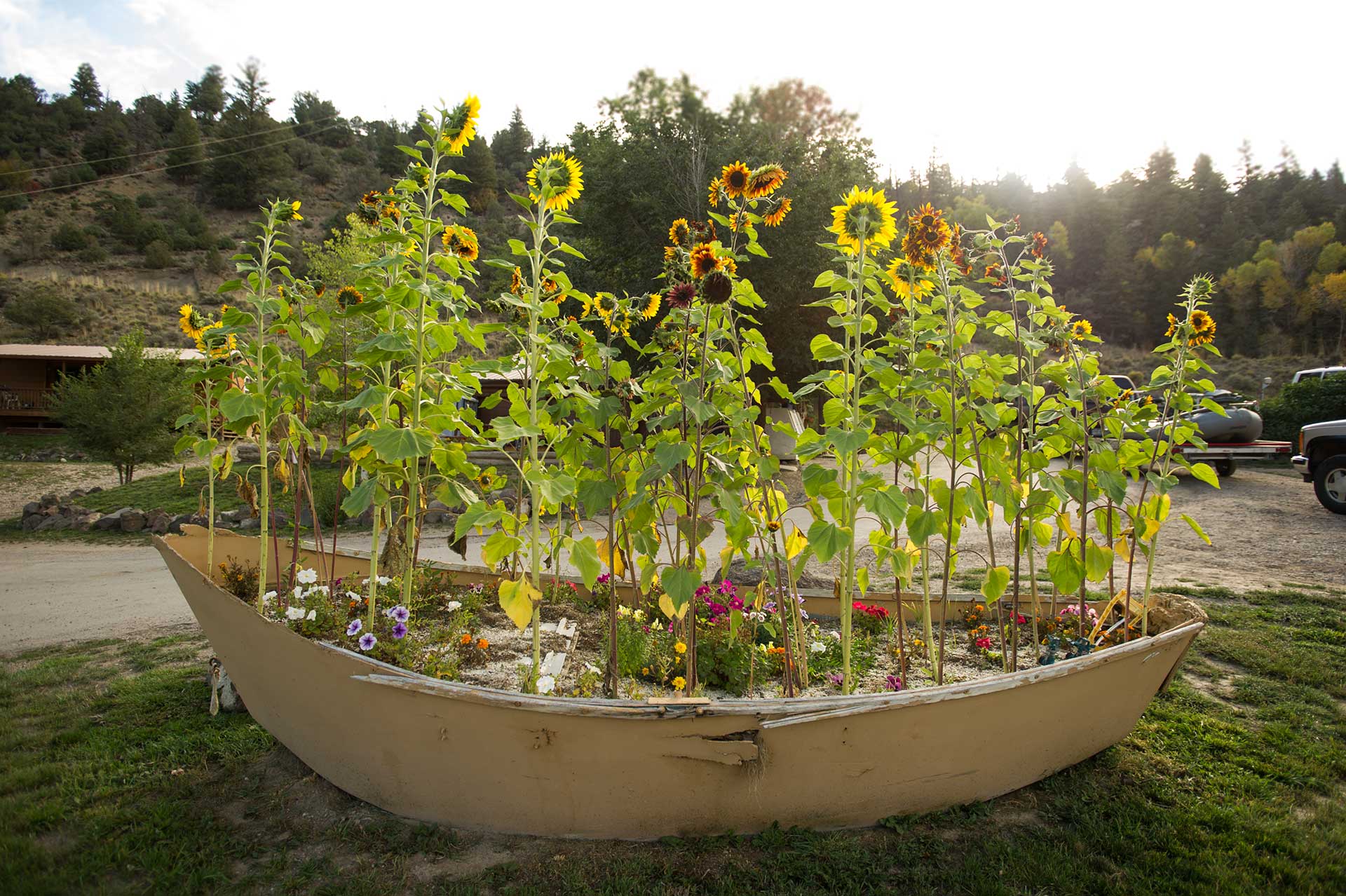Editor’s note: This piece was published originally in TROUT Magazine in the Summer of 2015.
Two years ago, I took possession of a weathered 15-year- old wooden fishing dory from my friend Andy Toohey. “Took possession,” because I didn’t buy it, and he didn’t want it. He let me have that boat, but only after I had promised that I would fully restore it, and I wouldn’t bring it back, whether I lived up to promise No. 1 or not.
Andy owns an upscale Colorado boatyard otherwise known as “Boulder Boat Works.” This particular dory was the first of hundreds he’d built. By then, it was in disrepair and needed a ton of work to make her “river worthy.” She wasn’t beyond saving, but she needed a complete overhaul. It was a monumental task and something I had never attempted, but I thought it would be a fun project and a fantastic educational process. It turned out to be all of that… and more.
I started by taking her almost completely apart. First, the floor came out. Next, the two bench seats with dry storage, then the stern seat and everything inside. After that, I turtled her over, which is how she stayed for almost a year. With the help of many friends, I redid the entire bottom and outside of the hull. When we finally flipped her upright again, she looked like a new boat. At least from the outside.
We then started on the interior, which took much longer than I would have ever thought. There were a few major setbacks along the way. Sometimes, weeks of work had to be redone. Like the time a horrendous thunderstorm penetrated the cover and dumped inches of water into the hull where it soaked into the wood and split the newly refinished chine battens. In the end, though, she was something I was immensely proud of, rookie blemishes and all.
Throughout the process, I had struggled to come up with a name for the boat. Something that had demanded this much work (thinking back, I guessed I had put in at least 200 hours, not to mention the time donated by friends and family) deserved a perfect moniker, especially for such a classy vessel with a storied beginning.
Many names came and went until Aug. 7 of last year, when the unthinkable happened. My 26-year-old sister tragically passed away after fighting for her life for almost a week in intensive care. She had been in a near-drowning accident while floating a river near her home in Texas.
It was painfully obvious to me at that point what to name the boat. My sister’s name was Kathryn Walker, but many of her friends simply called her “Katwalk.”
So that’s the name I chose.

Just before last Christmas, I took advantage of some warm weather and, aside from a few needed cosmetic touches, finished the “Katwalk” on December 20th. I could barely contain my excite- ment, and after putting the last screw in the captain’s seat, I announced to my wife and kiddo that we were going for the inaugural float on our local bass lake. There was a little bit of open water, so we took her out for a brief 15-minute row. It wasn’t a river, but it didn’t matter.
She felt amazing. Much lighter to the touch than I would have expected. She floated like a cork and spun like a top. I was pleased. With that, we pulled her out of the lake and put her on the trailer for the mile-and-a-half drive back to my house.
But the Katwalk never made it home.
We were T-boned by a Suburban that had sped through a traffic light. The impact flipped the Jeep we were in—totaling it, the trailer and hurtling the Katwalk almost 50 feet onto the concrete.
Miraculously, we were all pretty much okay. My wife had some deep lacerations in her arm; my daughter was basically unhurt (saved by her car seat), and while I have some nagging shoulder and back issues, it could have been much worse considering the severity of the accident. The Katwalk, unfortunately, while pseudo-intact, is far beyond repair and will never float again.
Never in my life have I felt so frustrated, angry and dejected. While I’ve tried to see the positives, it’s been very difficult. I’m so emotionally attached to the “Katwalk” at this point that it’s taken me some time to process what really happened, and why.
The final couple weeks of restoration were done in a fog of intense grief, and looking back I think they were some- what cathartic for me. After Kathryn’s death, I felt a strong need to finish the boat quickly. It was as if my sister were watching me.
I’m so emotionally attached to the “Katwalk” at this point that it’s taken me some time to process what really happened, and why.
There were many long nights in my parents’ garage through the months of August and September. I burned through sandpaper trying desperately to get every corner, every nook and cranny to bare wood. I wanted it perfect. I wanted it something Kathryn would be proud of. Something I could be proud of.
It was all that.
But I also wanted a boat I’d have for-ever, and something that could bridge the gap as a way to talk to my daughter about the aunt who loved her so much. In my mind, the boat was a way for her legacy to live on, to bring her up in conversation while out doing what I love most. A way not to forget.
The fact that my sister died while floating a river is not lost on me. I’m a river rat. I love the waters and have spent much of my adult life on them, floating and fishing. A few people have asked me if all this has affected my ability to be on the water now. For reasons I still do not understand, I haven’t given quitting a second thought. Life without rivers is simply not an option for me. I need the water. I must row, and catch fish and feel the currents pull me downstream.
Maybe, after all, the boat was more than just a tribute to my sister. Like the restoration itself, the entire process was an education and experience far beyond what it should have been. It was more about the relationship I had with them.
Both were taken far too soon but the memories will always be with me and that’s more important than any hunk of wood could ever be.
As I write this, what’s left of the boat is being cut up. The stern seat is getting made into a glider/rocker for my porch. The bow and hand-painted name planks will become a planter for my parents’ garden. The teak flooring will become cheese boards (Kathryn loved cheese), complete with a Katwalk “brand” for any family or friends who want them. The leftover bits and pieces are going to be burned. What little remains will be taken and left in the river where she had her accident by me on a solo canoe mission sometime later this fall or winter.
The Katwalk may never be rowed down a river. But she will live on.



